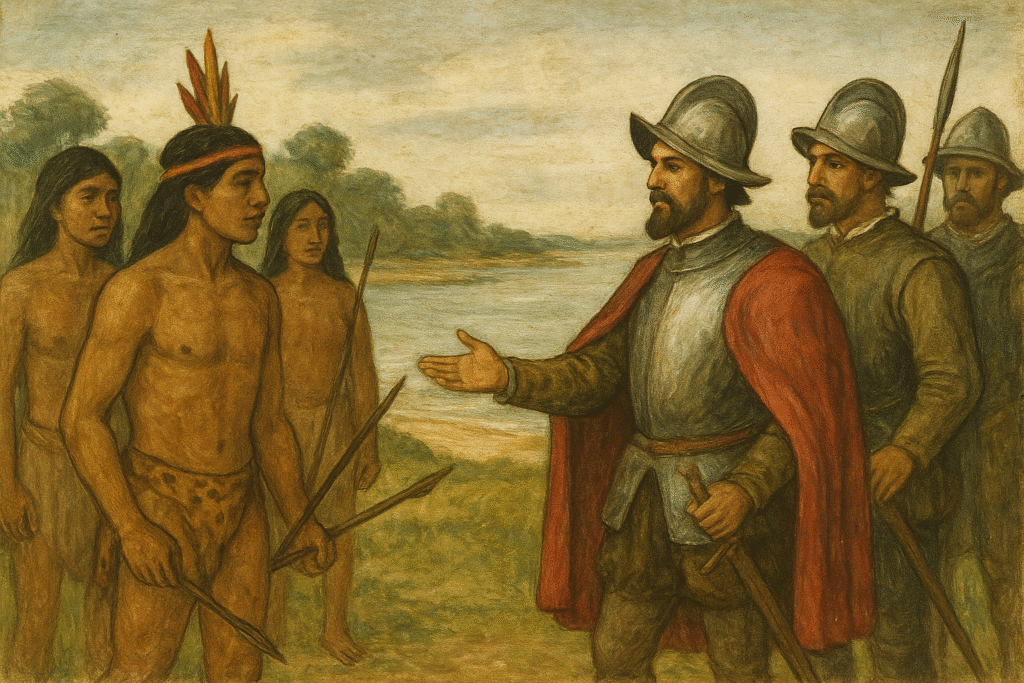How Did the Portuguese treatment of natives in Brazil?

Introduction Explore the history of Portuguese treatment of natives in Brazil. When the Portuguese first arrived on the land that’s now Brazil in 1500, they encountered many indigenous peoples, who had lived there for thousands of years with rich cultures, languages, and social systems. The Portuguese-Indian contact was complex. Sometimes there were trade and cooperation; often there was conflict, violence, forced labor, and disease. This article examines the Portuguese treatment of natives in Brazil over the colonial period: the early encounters, the institutions that shaped relationships, the abuses and resistance, and the long-term impacts. It aims to provide a balanced view, recognizing not only wrongdoing but also the resilience and agency of indigenous communities. Early Contacts and First Encounters Enslavement, Forced Labor, and Violence Institutional Laws, Reforms, and Missions Resistance, Uprisings, and Indigenous Agency Everyday Life for Natives under Colonial Rule Long-Term Impacts and Legacy Reflections: Was Everything Bad? While much of the history involves suffering, violence, and injustice, the full picture is nuanced: Example and Case Studies about Portuguese treatment of natives in Brazil Why Understand about Portuguese treatment of natives in Brazil Conclusion about Portuguese treatment of natives in Brazil The treatment of native peoples by the Portuguese in Brazil presents a complex story. It involved trade and early cooperation; however, it also brought enslavement, violence, displacement, and cultural suppression. Over time, colonial authorities and missionaries imposed European customs and Christian norms, attempting to reshape indigenous life. Even so, indigenous peoples resisted, adapted, and survived, proving their resilience across centuries. Today, recognizing this history remains essential. We do so not only to dwell in guilt but also to foster understanding, promote reflection, and take responsibility for the past. Consequently, Brazil must continue to pursue justice through land demarcation, cultural rights, fair treatment, and reparation. Moreover, these actions help strengthen the country’s democratic values and reinforce respect for human diversity. Ultimately, this story is not merely about how the Portuguese treated native peoples; instead, it reveals how Brazil was shaped, how its history evolved, and how indigenous communities continue to enrich its national identity. Portuguese treatment of natives in Brazil – online Sources
Unlocking the Beauty of Portuguese: Your Essential Lexicon Guide

Learn Portuguese with the Essential Portuguese Lexicon Introduction If you want to learn Portuguese, the Essential Portuguese Lexicon is the ideal resource to start your journey. More than a simple vocabulary list, this lexicon integrates cultural context, linguistic nuances, and practical usage to make language learning engaging and effective. To truly learn Portuguese, one must not only memorize words but also embrace the customs, expressions, and traditions that reflect the rich culture of Portuguese-speaking countries. As language learners often face the challenge of feeling overwhelmed by vocabulary, the Essential Portuguese Lexicon aims to demystify this process. By systematically categorizing words into themes—such as greetings, food, travel, and emotions—learners can focus on the most relevant vocabulary for their immediate needs. This targeted approach not only fosters retention but also encourages practical application in everyday scenarios. The lexicon highlights essential phrases used in various regions, thus providing learners with insights into regional dialects and local expressions. The accessibility of the Essential Portuguese Lexicon makes it a user-friendly tool for learners at all levels, whether beginners or those seeking to refine their skills. With an emphasis on engagement, the lexicon incorporates interactive elements to foster active learning. Language can often seem daunting, yet this lexicon brings forth the excitement of mastering Portuguese. As each new word is learned, users can simultaneously immerse themselves in the culture behind the language, making each lesson more meaningful. In fostering a deeper understanding of Portuguese, learners will find themselves not only expanding their vocabulary but also appreciating the cultural significance behind the words they learn. This comprehensive guide invites readers to unlock not just the language, but the beauty and vibrancy of Portuguese-speaking cultures along the way. Why Learn Portuguese? Benefits and Opportunities Learning Portuguese provides numerous opportunities for personal growth, travel, and professional advancement. With over 260 million speakers worldwide, Portuguese is the sixth most spoken language and is official in countries such as Brazil, Portugal, Angola, and Mozambique. Career opportunities: Many global companies value employees who can communicate in Portuguese, especially in growing markets like Brazil. Cultural access: By learning Portuguese, you gain access to unique literature, cinema, and music. Travel advantages: Speaking the language makes exploring Lisbon, Rio de Janeiro, or Luanda far more rewarding. 👉 Want to explore grammar lessons? Check out ours classes: Portuguese verb conjugation. Structure and Features of the Essential Portuguese Lexicon To help learners learn Portuguese more effectively, the lexicon is organized into three sections: Everyday Vocabulary (H3 with keyphrase synonym) Words for greetings, numbers, food, and travel to build a strong foundation. Essential Phrases to Learn Portuguese (H3 optimized) Practical expressions for travel, social situations, and emergencies. Cultural Notes for Portuguese Learners (H3 optimized) Getting Started: Tips to Learn Portuguese Effectively To make the most of the Essential Portuguese Lexicon: Set goals – Decide whether you want to focus on basic conversations or fluency. Practice pronunciation – Use podcasts, YouTube channels, and apps like Duolingo. Use multimedia – Watch Portuguese movies, listen to Brazilian music, or follow native speakers on social media. Integrate daily practice – Label household objects in Portuguese or keep a daily language journal. Explore our resource: Beginner’s guide to Portuguese pronunciation. Conclusion The Essential Portuguese Lexicon is more than a dictionary; it’s a complete guide to help you learn Portuguese with confidence. By combining vocabulary, essential phrases, and cultural insights, this tool empowers learners to build fluency and truly connect with the Portuguese-speaking world. Whether your goal is travel, career, or personal growth, learning Portuguese will enrich your life in countless ways.
